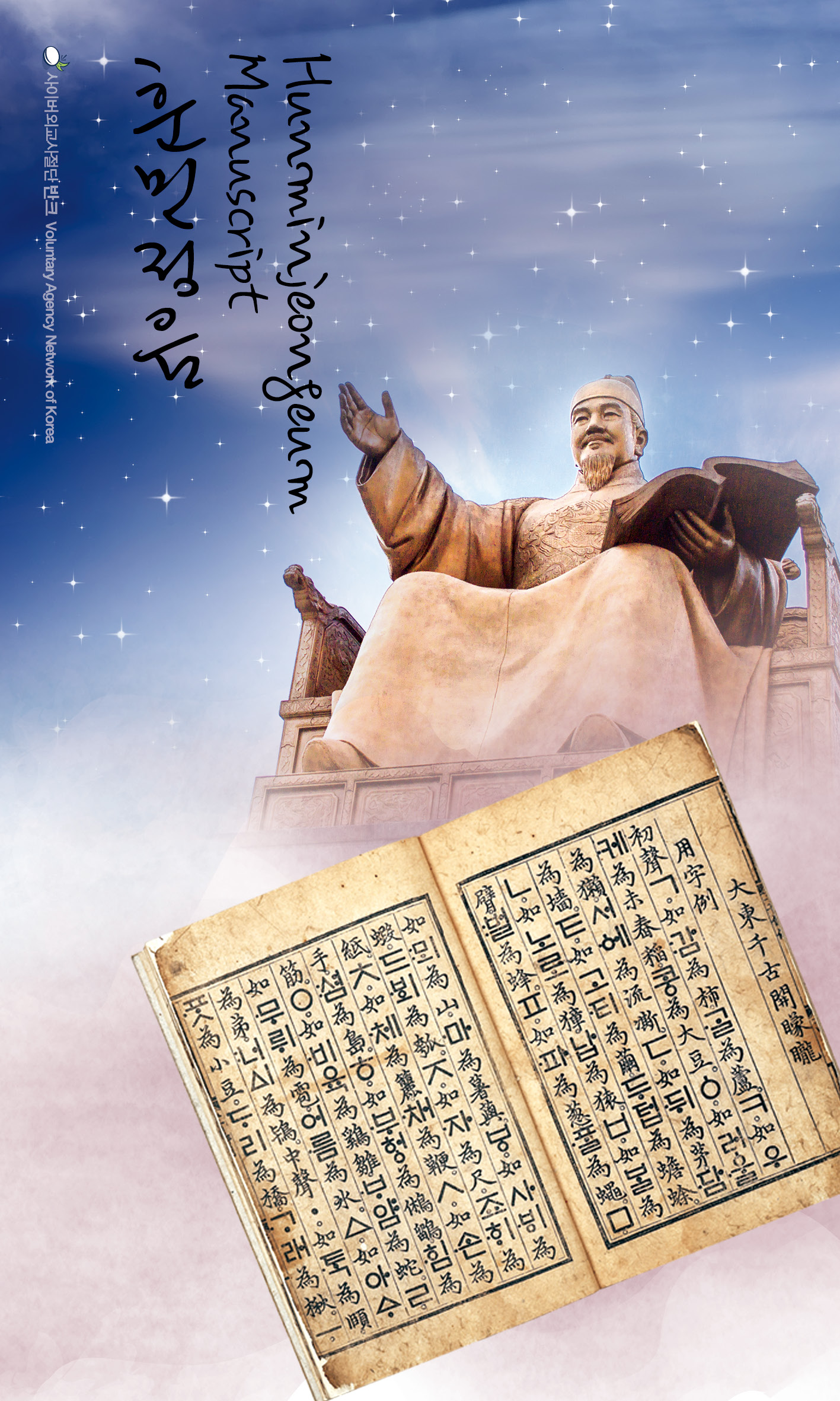 <Hunminjeongeum> was published in 1446 to announce the creation of a Korean unique script, ‘Hangeul’, and describe it. Meaning ‘the right sound to teach people’, Hunminjeongeum is not only the name of book, but also the initial name of Hangeul when it was created. Created by King Sejong (1397-1450) in 1443, Hangeul is a scientific, systematic and original script.
<Hunminjeongeum> was published in 1446 to announce the creation of a Korean unique script, ‘Hangeul’, and describe it. Meaning ‘the right sound to teach people’, Hunminjeongeum is not only the name of book, but also the initial name of Hangeul when it was created. Created by King Sejong (1397-1450) in 1443, Hangeul is a scientific, systematic and original script.
<Hunminjeongeum> is 20㎝-wide and 32.3㎝-long and was printed on woodblock. The book consists of a preface written by King Sejong himself and Hunminjeongeum Haerye written by eight scholars under the King’s order. King Sejong introduced the purpose of publishing the book and 28 new letters, and described how to combine them in the preface. In addition, the scholars explained in detail the principle of Hangeul and the way to use it by combining letters with examples. <Hunminjeongeum> was found in Andong in 1940. Until this book was found, there had been a lot of discussions on how Hangeul was created, but it became clear due to <Hunminjeongeum>. Nowadays, 24 letters of Hangeul is used out of the initial 28 letters as 4 letters have naturally disappeared.
It is unprecedented in the world history to create the letters and use them as the official script like Hangeul. Not only that, it is even more so to publish a book in order to describe the new letters. <Hunminjeongeum>, a record about the best cultural heritage – Hangeul – is a creative Korean heritage that was created with the wisdom and originality of Koreans.